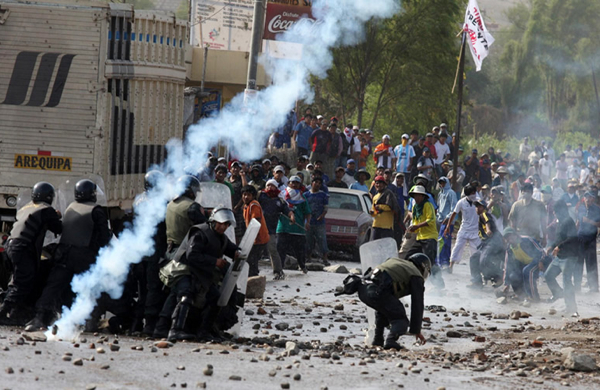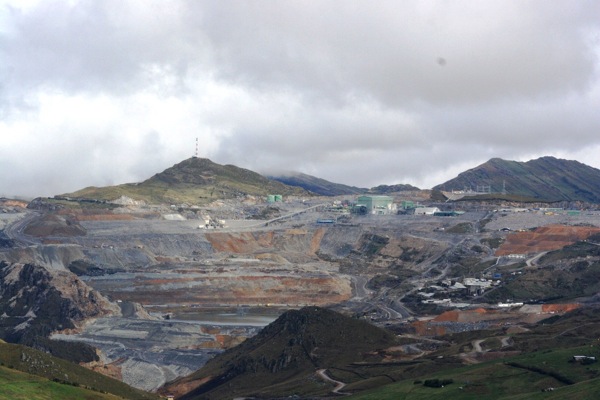One killed at protests against Tia Maria copper project in Peru

Image: screenshot from 24Hours, via YouTube.
One person was killed and 12 others seriously injured Wednesday in Peru as police opened fire on a group of farmers protesting against Southern Copper’s (NYSE, LON: SCCO) $1.4 billion Tia Maria copper project.
The victim, identified as 61-year-old Victoriano Huayta, died at the local hospital after receiving several bullet fragments in the lower abdomen, local paper El Popular reports.
For years farmers, anti-mining activists and local leaders have opposed the project, which they argue will pollute key waterways for Arequipa, the southern state where the Tia Maria mine will be built.
In response, Southern Copper, one of the world’s biggest producers, has reworked its project several times to gain approval. The goal was finally reached in August 2014, with the Peruvian government declaring the miner’s EIA complied with all the demands brought forward by locals and environmentalists.
Earlier this month, Peru’s Energy and Mines Ministry issued a statement saying that the company has guaranteed that it won’t touch water to be used for farming, and that dust from the mining process will also be controlled. The announcement followed Minister of the Environment Manuel Pulgar-Vidal’s declarations affirming that Tia Maria was “safe for the environment.”
“Anti-mining Terrorism”
Fresh demonstrations at the end of March pushed Southern Copper’s spokesman in Peru, Julio Morriberon, declare the company was cancelling the project, as it has grown tired of ongoing “anti-mining terrorism” in the area.
Chief Executive Officer Oscar Gonzalez Rocha, however, promptly dismissed such comments, telling Bloomberg the company would use “its greatest efforts” to advance the debated project.
The protests against Tia Maria echo other fights between anti-mining groups, farmers and mining companies over the last few years over who gets to use precious water supplies in bone-dry areas of Peru.
Southern Copper estimates that Tia Maria will produce 120,000 tons of copper cathodes a year, for an estimated 20-year lifespan.
Peru’s government forecasts the country will produce 2.8 million tons of copper a year by 2016, about double its current production as a number of new projects come on stream.
More News
Nornickel believes 2026 will bring dividends, CEO says
Nornickel did not pay full-year dividends for 2022, 2023 and 2024.
December 27, 2025 | 07:42 am
{{ commodity.name }}
{{ post.title }}
{{ post.date }}





Comments